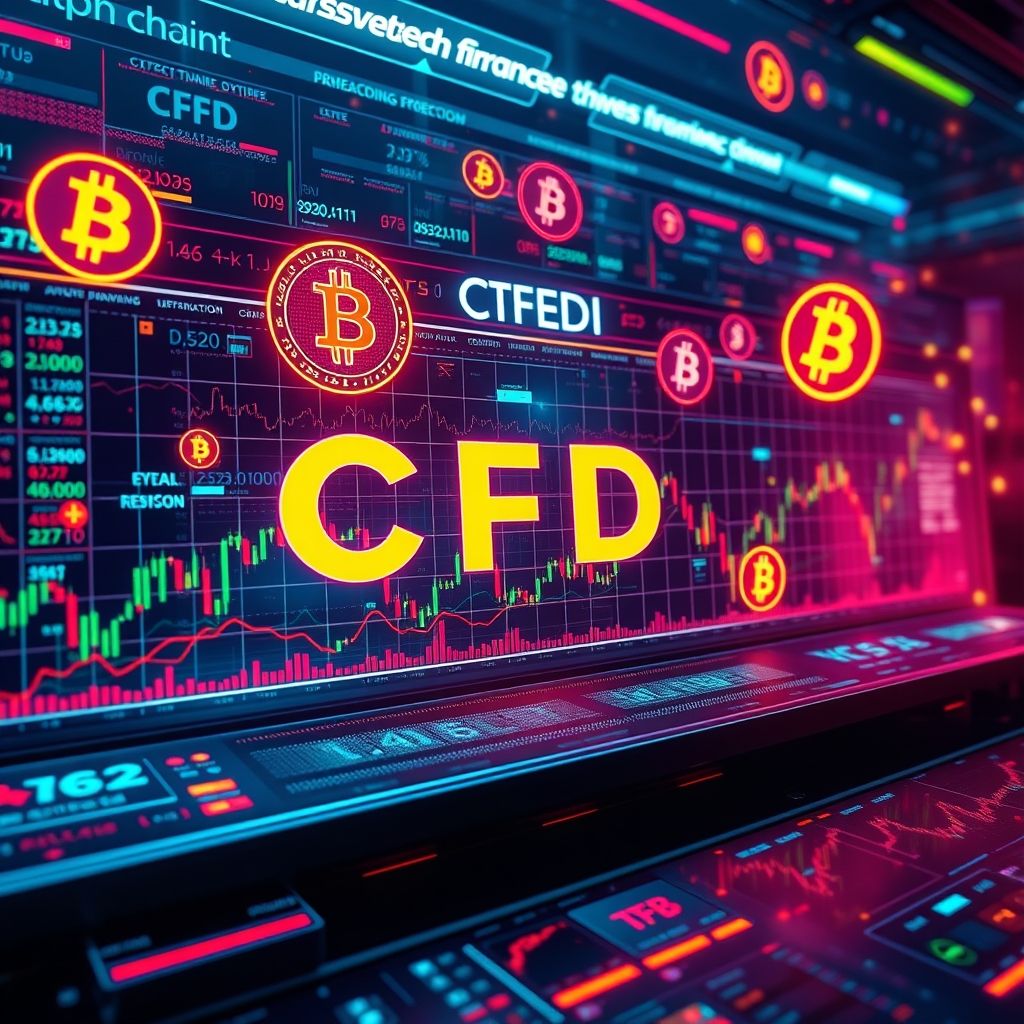Can I leverage on-chain CFDs?
Can I Leverage On-Chain CFDs? Exploring the Future of Decentralized Derivatives Trading
Imagine a world where trading your favorite assets—stocks, forex, crypto, indices, commodities—is as seamless, transparent, and secure as sending a message. That’s the promise of on-chain CFDs in the WEB3 era. But hold on—what does leveraging on-chain CFDs really mean, and is it a game-changer or just another hype? Let’s dive into this evolving landscape.

Unlocking the Power of On-Chain Contracts
On-chain CFDs (Contracts for Difference) are essentially decentralized derivatives agreements recorded directly on blockchain networks. Unlike traditional CFD brokers, which rely on third-party middlemen, these contracts run on smart contracts—self-executing code that automatically enforces terms without human intervention.
Think about it: no more worrying about broker insolvencies or opaque fee structures. With on-chain CFDs, everythings transparent, traceable, and tamper-proof. Its a bit like using a vending machine that reliably only gives you snacks you paid for—no hidden catches. This transparency creates a sense of trust many traders crave in volatile markets.
The Why and How of Leverage in On-Chain CFDs
Leverage amplifies potential gains—and losses. In traditional finance, leveraging 10x or even 100x is standard, but it also ramps up risk massively. On-chain CFDs open a window to leverage using smart contracts, often with more accessible and flexible options.
For instance, say you think Bitcoin is going to rise. You could open an on-chain CFD with 5x leverage—controlling a larger position than your actual funds—aiming for bigger profit potential. But keep in mind, the automated nature of these contracts means your risk is also magnified, and liquidations happen swiftly if markets move against you.
The Pros and Cons: Why Many Are Paying Attention
Advantages include:
- Decentralization and Trust: No central entity controlling your assets—everything’s on the blockchain, reducing counterparty risk.
- Transparency and Record-Keeping: Every trade, every leverage call, is recorded immutably, which can help in audits or disputes.
- Lower Barriers to Entry: No need for extensive institutional accounts—crypto wallets and smart contract interactions make it more accessible.
Challenges to watch out for:
- Smart Contract Risks: Coding bugs or vulnerabilities can expose traders to unforeseen losses.
- Liquidity Constraints: Compared to established platforms, decentralized pools might have lower liquidity, especially for exotic assets.
- Regulatory Uncertainty: As decentralized finance (DeFi) matures, regulators are catching up, potentially tightening the screws.
The Shift Toward Multi-Asset and Cross-Asset Trading
Why stop at crypto? Modern on-chain derivatives platforms are expanding into forex, stocks, indices, commodities, and options—bringing the traditional financial playground closer to decentralized finance. Imagine a single interface where you can hedge gold, speculate on Tesla shares, and trade forex pairs—all on-chain.
This multi-asset approach means traders are not limited anymore. Diversification becomes feasible without moving money between different brokers or jurisdictions, reducing friction and increasing flexibility.
Strategies and Safety Tips for Leveraged Trading
If you’re considering leveraging on-chain CFDs, remember: don’t go all-in. Use proper risk management—set stop-loss orders and take-profit points—just like in traditional trading. Also, keep an eye on network fees and transaction times, which can impact your trades during network congestion.
Diversify your leverage exposure, and don’t overreach. While the technology offers exciting opportunities, it’s still early days. Stay informed about platform security updates and consider using hardware wallets for added security.
The Road Ahead: Decentralization, AI, and Smarter Contracts
Decentralized finance is swiftly evolving. The integration of AI-driven trading bots with smart contracts promises to make dynamic hedging and predictive strategies more accessible. Soon, we could see fully automated on-chain portfolios that adjust leverage based on market signals—think of it as having a robot trader working tirelessly for you.
However, scaling faces hurdles—be it transaction speed, security standards, or regulatory frameworks. As blockchain technology matures, expect a more user-friendly experience that blends the transparency and security of DeFi with the sophistication of institutional trading.
The Future Is Leverage-Enabled, Decentralized, and Smarter
On-chain CFDs might just be the tip of the iceberg. As the WEB3 world integrates more advanced tech—think AI, multi-chain interoperability, and intelligent smart contracts—the way we trade assets will become more integrated, more secure, and more accessible.
Are you ready to leverage the future? Because in this space, the potential to trade smarter, bigger, and more transparently is just getting started.
Empower your trades—decentralize your gains.